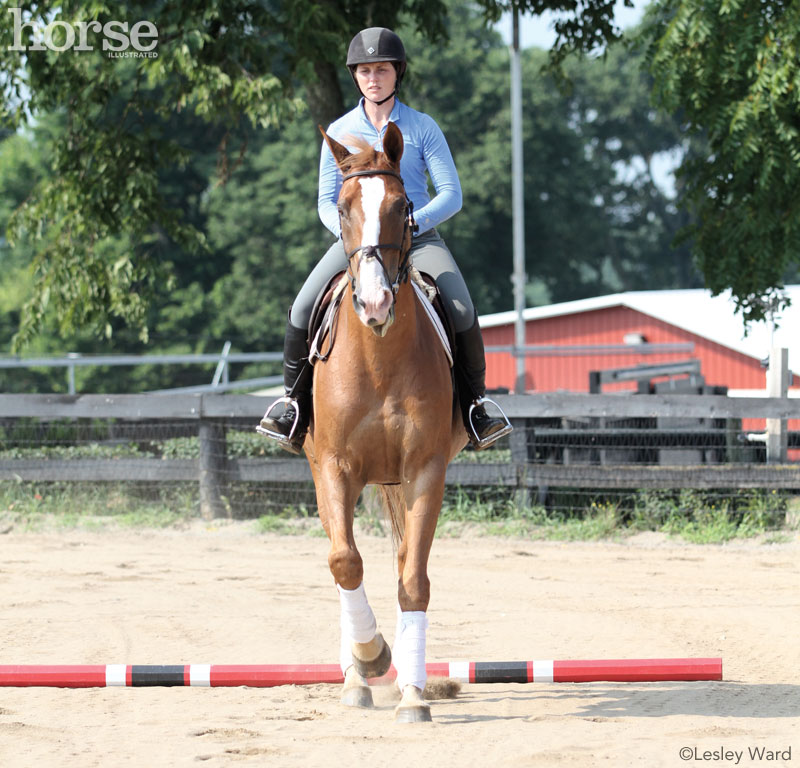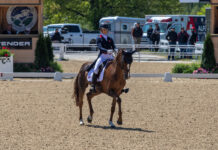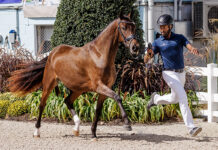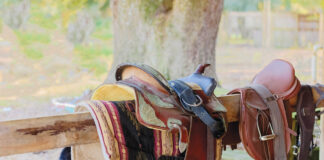
Q: I have been working with a green horse over 2’6″ fences, and when he lands he pulls his head down, taking me with him, even when I start out secure in the saddle. What can I do to sit correctly in the saddle on landing?
Second, check your stirrup length. Your stirrups should hit at or just above your ankle bone when your foot is out of the stirrup and resting. When your feet are in the stirrups, keep your weight in your heels with knees and hips bent to keep your balance over your heels, which are your center of gravity. You can practice deep knee bends on the ground while holding your arms out to the side to replicate this feeling.
If your horse gets the vet’s OK and your stirrup length is correct, you’re ready to begin training.
Place a pole on the ground in a large, open part of your arena. Practice cantering the pole in a comfortable, relaxed seat. Canter 30- to 40-meter circles, two to three times on each lead. When your horse will canter over the pole comfortably without changing his rhythm, add a second pole to the other side of the circle.
After a few consecutive days, adjust your position to two-point for the entire circle and build small cross-rails in place of the poles. Continue the same exercise. This exercise will allow you to strengthen your leg and back muscles as well as allow you to focus on your center of balance. When you’re able to canter these small jumps without issue, begin raising and spreading the jumps gradually, along with enlarging your circles. Add straight lines, returning to the circles to regain consistency if you feel your horse is getting strong or pulling you out of the saddle.
If you do find him pulling you out of the saddle again, lower the jumps until your foundation is more secure. The goal is to build confidence in both you and your horse, allowing the jump to be just another canter stride in rhythm.
Liked this article? Here’s more jumping advice:
Fix Your Leg Position Over Fences
Better Jumping with Ground Pole Exercises
CARRIE DAHMER is the owner of Alta Vista Equestrian in Lexington, Ky., and a USEF “R”-rated judge in hunters, hunter equitation and hunter breeding. She is also a USHJA Certified Trainer.
This article originally appeared in the November 2014 issue of Horse Illustrated magazine. Click here to subscribe!







great info
I am coping to copy this information for our little horse club, because we are just starting doing small jumps, and some of the girls are having issues.
I had this same problem with my lesson horse. He has the habit of dropping his head after jumps and after a few near misses, he succeeded in unseating me. I fell hard.
After that I started doing squats on the ground focusing on keeping my weight on my heels, my back straight, shoulders back, chest up (boobs out!) and chin up. I would assume this position over the jumps. It seems exaggerated but it keeps me on the saddle even over the clumsiest jumps (as well as his occasional post-jump bucks). I also do exercises to strengthen my inner thigh, which is the muscle you use when holding on for dear life with your lower leg lol.